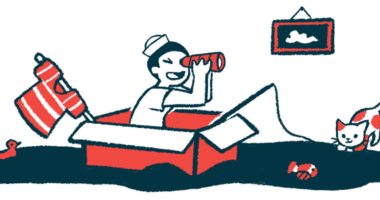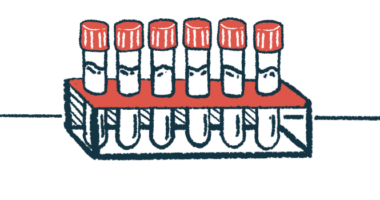Treatment with salanersen shows benefits for SMA children in trial
Injection therapy found to slow neurodegeneration, improve motor function

Interim results from a Phase 1 clinical trial show salanersen, Biogen’s treatment candidate for spinal muscular atrophy (SMA), slowed neurodegeneration, and improved motor function, in children with the genetic disease.
The data also demonstrated that four of eight SMA children treated for at least one year attained new World Health Organization (WHO) milestones, such as walking, crawling, standing, or sitting. according to the researchers.
The two-part trial (NCT05575011), launched in 2022, is testing the treatment’s safety, tolerability, pharmacological properties, and early efficacy in healthy volunteers and children with SMA.
These new results were presented at the SMA Research & Clinical Care Meeting, hosted by Cure SMA in Anaheim, California. Biogen is currently engaging with health authorities on the design of Phase 3 trials in patients who may or may not have been previously treated.
“Despite the remarkable therapeutic advancements in the field of SMA over the past decade, there remain critical unmet needs. Salanersen represents the next phase of Biogen’s ongoing pursuit to address these needs,” Stephanie Fradette, head of the neuromuscular development unit at Biogen, said in a company press release detailing the findings in these pediatric patients.
“We are encouraged by the available data and eager to move salanersen into the next stage of development as quickly as possible,” Fradette said.
SMA is chiefly caused by mutations in the SMN1 gene that lead to abnormally low levels of the survival motor neuron protein, known as SMN, and the progressive loss of motor neurons — the specialized nerve cells that control voluntary movements.
Salanersen (BIIB115/ION306) is an antisense oligonucleotide (ASO) that is designed to boost production of the SMN protein. This therapy has the same mechanism of action as Spinraza (nusinersen), Biogen’s approved SMA treatment that binds to a backup gene called SMN2, but was designed to achieve greater potency and enable one yearly dose. Spinraza became the first disease-modifying treatment to win regulatory approval for SMA, back in 2016.
The new treatment was initially developed by Ionis Pharmaceuticals, and acquired by Biogen in 2022.
Ongoing Phase 1 trial testing SMA treatment salanersen
In the first part of the Phase 1 trial, adult male volunteers were randomly assigned to receive single ascending doses of salanersen, or a placebo. In the trial’s second part, 24 children with SMA previously treated with Zolgensma (onasemnogene abeparvovec) — a one-time gene therapy approved in 2019 — received either one of two doses of salanersen: 40 mg or 80 mg. The treatment is given by intrathecal injection, or directly into the spinal canal.
Early results obtained for the SMA patients demonstrated that, in those with elevated levels of neurofilament light chain (NfL), a marker of nerve cell damage, initiation of salanersen led to mean reductions in NfL of 70% after six months. This improvement was sustained through one year.
Also, in the eight children, ages 2 to 12, followed up for at least one year — all receiving the 40 mg dose — four achieved new motor milestones, and were able to now do things they could not previously do on their own or required assistance to accomplish. These included walking, crawling, standing, or sitting.
To see a child dosed with gene therapy at [1] year of age and still unable to sit without support at age [5] then gain the ability to sit independently just [three] months after initiating salanersen, that is unexpected.
The youngsters also experienced clinically meaningful improvements in motor function, among them a 3.3-point mean improvement in the Hammersmith Functional Motor Scale-Expanded (HFMSE), which assesses motor abilities, and a 5.3-point mean improvement on the Revised Upper Limb Module (RULM), used to evaluate motor performance in the upper limbs.
Treatment generally was safe and well tolerated at both doses tested, with most adverse events considered mild to moderate in severity. The most commonly reported adverse events have included fever and upper respiratory tract infections.
“Of the data generated, to me, it is neurofilament and the WHO milestones that are most easily interpretable, given these children had previously received gene therapy,” said Valeria A. Sansone, MD, PhD, clinical and scientific director at the Clinical Center Nemo in Milan, Italy, and a principal investigator for the trial.
“To see a child dosed with gene therapy at [1] year of age and still unable to sit without support at age [5] then gain the ability to sit independently just [three] months after initiating salanersen, that is unexpected,” Sansone added.








